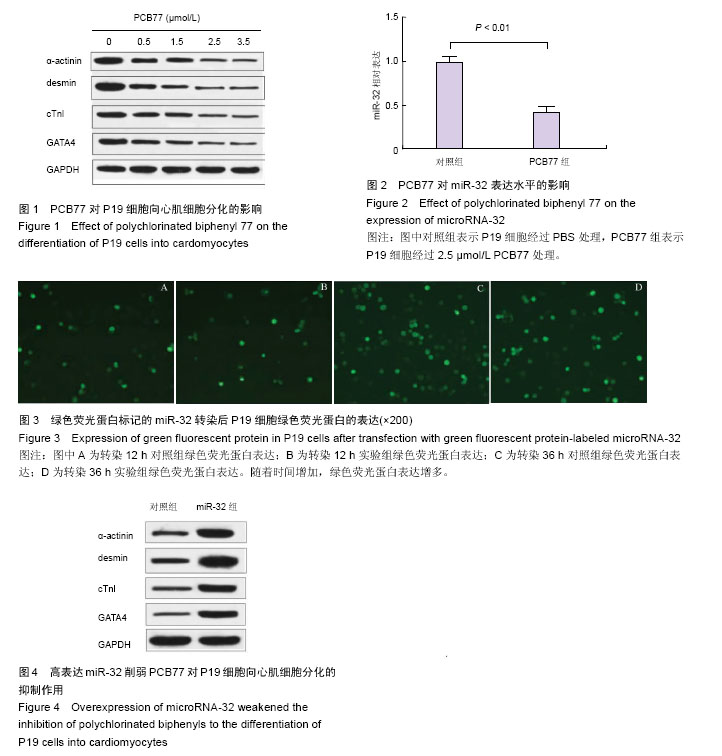| [1] Bartel DP. MicroRNAs: genomics, biogenesis, mechanism, and function. Cell. 2004;116(2):281-297.
[2] Ameres SL, Zamore PD. Diversifying microRNA sequence and function. Nat Rev Mol Cell Biol. 2013; 14(8):475-488.
[3] Hausser J, Zavolan M. Identification and consequences of miRNA-target interactions--beyond repression of gene expression. Nat Rev Genet. 2014;15(9):599-612.
[4] Pasquinelli AE. MicroRNAs and their targets: recognition, regulation and an emerging reciprocal relationship. Nat Rev Genet. 2012;13(4):271-282.
[5] Friedman RC, Farh KK, Burge CB, et al. Most mammalian mRNAs are conserved targets of microRNAs. Genome Res. 2009;19(1):92-105.
[6] Hwang HW, Mendell JT. MicroRNAs in cell proliferation, cell death, and tumorigenesis. Br J Cancer. 2006; 94(6): 776-780.
[7] Feng Y, Yu X. Cardinal roles of miRNA in cardiac development and disease. Sci China Life Sci. 2011; 54(12):1113-1120.
[8] Callis TE, Wang DZ.Taking microRNAs to heart.Trends Mol Med. 2008;14(6):254-260.
[9] Voellenkle C, van Rooij J, Cappuzzello C, et al. MicroRNA signatures in peripheral blood mononuclear cells of chronic heart failure patients. Physiol Genomics. 2010;42(3):420-426.
[10] Crinnion WJ. Polychlorinated biphenyls: persistent pollutants with immunological, neurological, and endocrinological consequences. Altern Med Rev. 2011;16(1):5-13.
[11] Sergeev AV, Carpenter DO. Hospitalization rates for coronary heart disease in relation to residence near areas contaminated with persistent organic pollutants and other pollutants. Environ Health Perspect. 2005; 113(6):756-761.
[12] 王薛洁,余章斌,韩树萍,等.整体原位杂交方法研究多氯联苯对斑马鱼心脏发育的影响[J].实用儿科临床杂志, 2012, 27(7): 537-539.
[13] Goncharov A, Bloom M, Pavuk M, et al. Blood pressure and hypertension in relation to levels of serum polychlorinated biphenyls in residents of Anniston, Alabama. J Hypertens. 2010;28(10): 2053-2060.
[14] Kopf PG, Walker MK. Overview of developmental heart defects by dioxins, PCBs, and pesticides. J Environ Sci Health C Environ Carcinog Ecotoxicol Rev. 2009; 27(4): 276-285.
[15] McBurney MW, Rogers BJ. Isolation of male embryonal carcinoma cells and their chromosome replication patterns. Dev Biol. 1982;89(2):503-508.
[16] Wei H, Juhasz O, Li J, et al. Embryonic stem cells and cardiomyocyte differentiation: phenotypic and molecular analyses. J Cell Mol Med. 2005;9(4): 804-817.
[17] van der Heyden MA, Defize LH. Twenty one years of P19 cells: what an embryonal carcinoma cell line taught us about cardiomyocyte differentiation. Cardiovasc Res. 2003;58(2):292-302.
[18] van der Heyden MA, van Kempen MJ, Tsuji Y, et al. P19 embryonal carcinoma cells: a suitable model system for cardiac electrophysiological differentiation at the molecular and functional level. Cardiovasc Res. 2003;58(2):410-422.
[19] Zhang J, Kuai X, Song M, et al. microRNA-32 inhibits the proliferation and invasion of the SGC-7901 gastric cancer cell line in vitro. Oncol Lett. 2014;7(1):270-274.
[20] Petillo D, Kort EJ, Anema J, et al. MicroRNA profiling of human kidney cancer subtypes. Int J Oncol. 2009; 35(1):109-114.
[21] Xu JQ, Zhang WB, Wan R, et al. MicroRNA-32 inhibits osteosarcoma cell proliferation and invasion by targeting Sox9. Tumour Biol. 2014;35(10):9847-9853.
[22] Wu W, Yang J, Feng X, et al. MicroRNA-32 (miR-32) regulates phosphatase and tensin homologue (PTEN) expression and promotes growth, migration, and invasion in colorectal carcinoma cells. Mol Cancer. 2013;12:30.
[23] Callis TE, Pandya K, Seok HY, et al. MicroRNA-208a is a regulator of cardiac hypertrophy and conduction in mice. J Clin Invest. 2009;119(9):2772-2786.
[24] 黄锋,周胜华,潘家义,等. miRNA与Notch信号通路在心脏发育中的作用[J].中国组织工程研究与临床康复, 2010, 14(49):9298-9302.
[25] Cheng Y, Liu X, Zhang S, et al. MicroRNA-21 protects against the H(2)O(2)-induced injury on cardiac myocytes via its target gene PDCD4. J Mol Cell Cardiol. 2009;47(1):5-14.
[26] 王瑛,朱春,余章斌,等.多氯联苯对 P19 细胞向心肌分化进程的影响[J].临床儿科杂志, 2011, 29(7): 638-641.
[27] Hou L, Wang D, Baccarelli A. Environmental chemicals and microRNAs. Mutat Res. 2011;714(1-2):105-112.
[28] Guida M, Marra ML, Zullo F, et al. Association between exposure to dioxin-like polychlorinated biphenyls and miR-191 expression in human peripheral blood mononuclear cells. Mutat Res. 2013;753(1):36-41.
[29] Li Q, Kappil MA, Li A, et al. Exploring the associations between microRNA expression profiles and environmental pollutants in human placenta from the National Children's Study (NCS). Epigenetics. 2015; 10(9):793-802.
[30] Zhu C, Yu ZB, Zhu JG, et al. Differential expression profile of MicroRNAs during differentiation of cardiomyocytes exposed to polychlorinated biphenyls. Int J Mol Sci. 2012;13(12):15955-15966.
[31] Yan SY, Chen MM, Li GM, et al. MiR-32 induces cell proliferation, migration, and invasion in hepatocellular carcinoma by targeting PTEN. Tumour Biol. 2015; 36(6):4747-4755.
[32] Zhu D, Chen H, Yang X, et al. miR-32 functions as a tumor suppressor and directly targets SOX9 in human non-small cell lung cancer. Onco Targets Ther. 2015; 8:1773-1783.
[33] Zhang D, Ni Z, Xu X, et al. MiR-32 functions as a tumor suppressor and directly targets EZH2 in human oral squamous cell carcinoma. Med Sci Monit. 2014; 20:2527-2535.
[34] 沈继春,李阳,刘晓梅,等.多发性骨髓瘤患者miR-21和miR-32的表达及临床应用[J].中国实验诊断学, 2015, 19(7):1123-1126. |
.jpg)

.jpg)